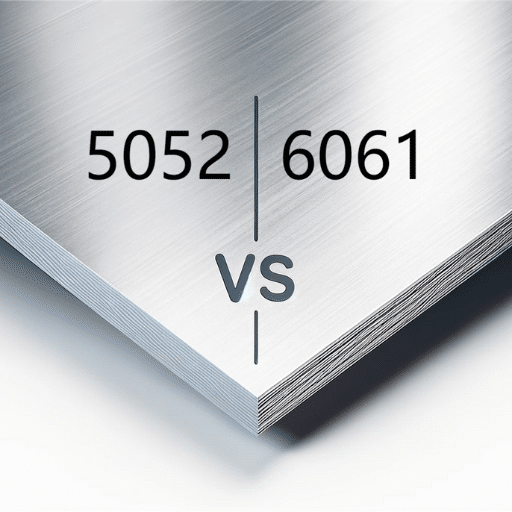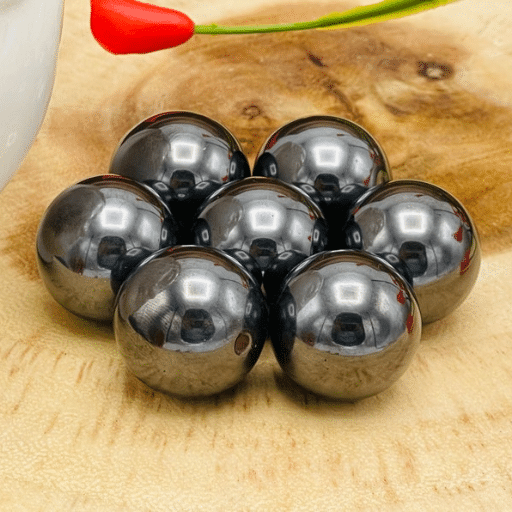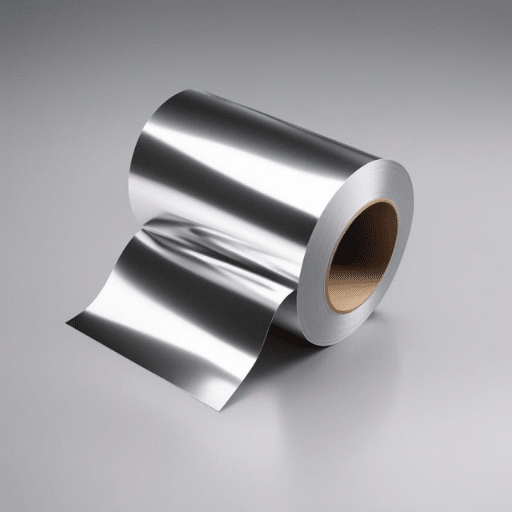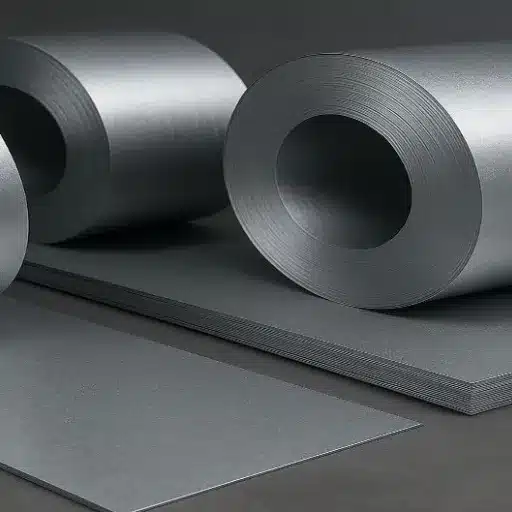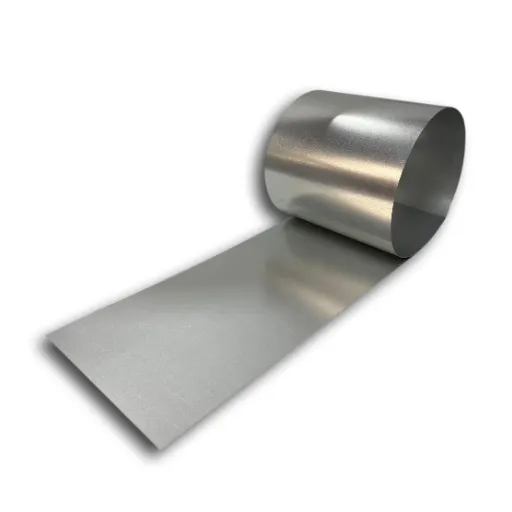Stainless steel is a material known for its durability, corrosion resistance, and versatility, making it a staple across countless industries. However, not all stainless steels are created equal, and understanding the differences between various grades is essential to selecting the right material for specific applications. Two of the most commonly compared grades, 316 and 316L stainless steel, often leave manufacturers, engineers, and industry professionals asking questions about their key distinctions. What sets them apart? When should you choose one over the other? This article dives deep into these two closely related grades, examining their composition, properties, and ideal use cases. Whether you’re selecting materials for harsh chemical environments, marine applications, or medical equipment, this guide aims to provide a clear and definitive answer to help you make informed decisions.
What Is 316 Stainless Steel?
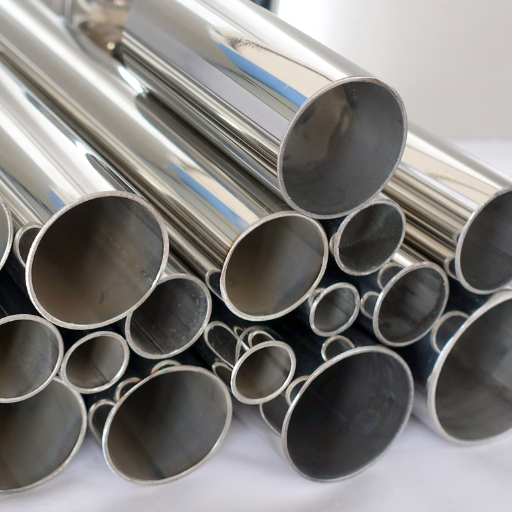
316 stainless steel is a highly durable, corrosion-resistant alloy primarily composed of iron, chromium, nickel, and molybdenum. The addition of molybdenum enhances its ability to resist pitting and crevice corrosion, especially in environments with high chloride exposure, such as seawater or industrial chemicals. This grade is known for its excellent strength and resistance to extreme temperatures, making it a preferred choice for applications like marine equipment, chemical processing, and medical devices. Its robust properties ensure long-lasting performance and reliability in demanding conditions.
Chemical Composition of 316 Stainless Steel
The chemical composition of 316 stainless steel is precisely engineered to deliver its superior corrosion resistance and mechanical properties. The approximate elemental composition is as follows:
- Chromium (Cr): 16.0% to 18.0%
Contributes to corrosion resistance and the formation of a passive oxide layer.
- Nickel (Ni): 10.0% to 14.0%
Enhances toughness and resistance to alkalis.
- Molybdenum (Mo): 2.0% to 3.0%
Provides additional resistance to pitting and crevice corrosion in chloride-rich environments.
- Carbon (C): Maximum 0.08%
Ensures the material maintains its strength while minimizing susceptibility to sensitization.
- Manganese (Mn): Maximum 2.0%
Improves strength and toughness.
- Phosphorus (P): Maximum 0.045%
Kept low to reduce the risk of brittleness.
- Sulfur (S): Maximum 0.03%
Low amounts improve machinability without significantly impacting corrosion resistance.
- Silicon (Si): Maximum 0.75%
Enhances oxidation resistance and strength at high temperatures.
- Iron (Fe): Balance
Acts as the primary base element of the alloy.
This specific combination of elements guarantees the performance of 316 stainless steel in challenging environments, making it suitable for critical applications requiring durability and resilience.
Mechanical Properties and Corrosion Resistance
316 stainless steel demonstrates exceptional mechanical properties, aligning with its widespread use in demanding industrial applications. It has a tensile strength of approximately 515 MPa (75 ksi) and a yield strength of around 205 MPa (30 ksi). This high strength-to-weight ratio ensures durability and resistance to deformation under stress. Additionally, the material exhibits excellent toughness, even at cryogenic temperatures, making it versatile for extreme environmental conditions.
The standout feature of 316 stainless steel is its superior corrosion resistance, particularly in chloride-rich environments. The inclusion of molybdenum in its composition enhances its ability to withstand pitting and crevice corrosion often caused by saltwater or other aggressive substances. This resistance extends to acids, alkalis, and a broad range of chemical exposures. The passive oxide layer naturally formed on its surface further protects against rust and ensures longevity in corrosive atmospheres. These properties collectively make 316 stainless steel an optimal choice for marine applications, chemical processing, and medical-grade equipment.
Applications of 316 Stainless Steel
- Marine Environments: Due to its exceptional resistance to chloride-induced corrosion, 316 stainless steel is widely used in shipbuilding, offshore platforms, and marine hardware such as fittings, propeller shafts, and fasteners.
- Chemical Processing Equipment: Its ability to withstand exposure to harsh chemicals makes it suitable for storage tanks, heat exchangers, and piping systems in chemical plants.
- Medical and Surgical Instruments: The alloy’s non-reactive nature, coupled with excellent sterilization properties, makes it ideal for surgical tools, orthopedic implants, and medical devices.
- Food and Beverage Industry: 316 stainless steel’s sanitary properties and resistance to high temperatures and acidic foods make it a superior choice for food processing equipment, brewing tanks, and dairy production tools.
- Pharmaceutical Manufacturing: Its compatibility with stringent hygiene standards and resistance to contamination make it a preferred material for reactors, mixers, and processing pipelines in pharmaceutical facilities.
Understanding 316 and 316L Stainless Steel
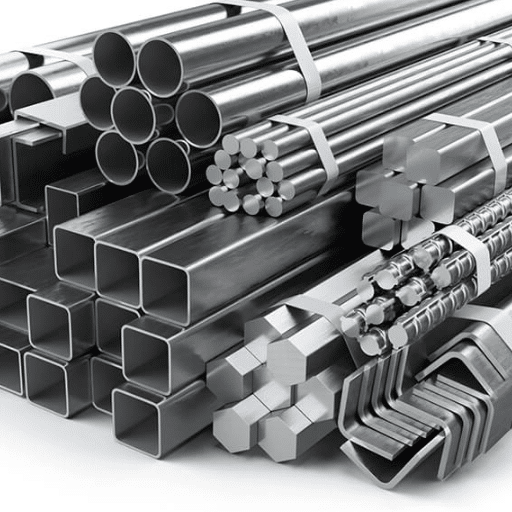
Chemical Composition and Properties
Both 316 and 316L stainless steel are austenitic chromium-nickel alloys containing molybdenum, which enhances corrosion resistance, particularly against chlorides and other industrial solvents. The primary distinction lies in their carbon content. 316 stainless steel contains up to 0.08% carbon, while 316L has a lower maximum carbon content of 0.03%. This difference makes 316L less susceptible to carbide precipitation during welding, improving its resistance to intergranular corrosion.
Applications and Benefits
316 stainless steel is suitable for applications requiring high strength and excellent resistance to harsh environments, such as marine or industrial settings. On the other hand, 316L is advantageous in applications where welding is necessary or where greater resistance to chemical attack is critical, such as medical implants and pharmaceutical equipment. Both types maintain excellent mechanical properties and ensure high performance under extreme conditions.
Selection Considerations
Choosing between 316 and 316L depends on the specific requirements of the application. For instance, if welding is a crucial part of the fabrication process, 316L is recommended to avoid weld decay. Conversely, for projects that demand higher tensile and yield strength without welding concerns, 316 may be the appropriate option.
Differences Between 316 and 316L
316 and 316L stainless steels differ primarily in their carbon content, which influences their welding suitability, mechanical properties, and corrosion resistance, particularly in specific environments.
|
Parameter |
316 |
316L |
|---|---|---|
|
Carbon Content |
Higher |
Lower |
|
Weld Suitability |
Prone to decay |
Excellent |
|
Strength |
Higher |
Slightly lower |
|
Corrosion Res. |
General use |
Superior in welds |
|
Cost |
Moderate |
Slightly higher |
Role of Carbon Content in 316L
- Improved Weldability: The lower carbon content in 316L reduces the risk of carbide precipitation during the welding process, minimizing intergranular corrosion and ensuring structural integrity.
- Enhanced Corrosion Resistance: Due to its reduced carbon levels, 316L demonstrates superior resistance to corrosion in welded areas, particularly in chloride-rich and chemically aggressive environments.
- Suitability for High-Temperature Applications: 316L retains its stability and mechanical properties at high temperatures, as the reduced carbon content prevents adverse phase changes.
- Reduced Sensitization Risk: The lower carbon concentration prevents the formation of chromium carbides, maintaining the alloy’s ability to resist corrosion over extended periods.
- Versatility in Critical Applications: The combination of lower carbon content with high-performance properties makes 316L suitable for pharmaceutical, marine, and food processing industries, where optimal hygiene and resistance to corrosive agents are critical.
Weldability and Strength Comparison
The primary differences between 316 and 316L lie in their carbon content, with 316L having a lower carbon concentration, leading to improved weldability and reduced risk of carbide precipitation, while both have comparable strength under typical conditions.
|
Parameter |
316 |
316L |
|---|---|---|
|
Carbon (%) |
Up to 0.08 |
Up to 0.03 |
|
Weldability |
Moderate |
Excellent |
|
Corrosion |
Susceptible |
Resistant |
|
Strength |
Similar |
Similar |
|
Applications |
General |
Critical |
How Does Corrosion Resistance Differ in 316 and 316L?
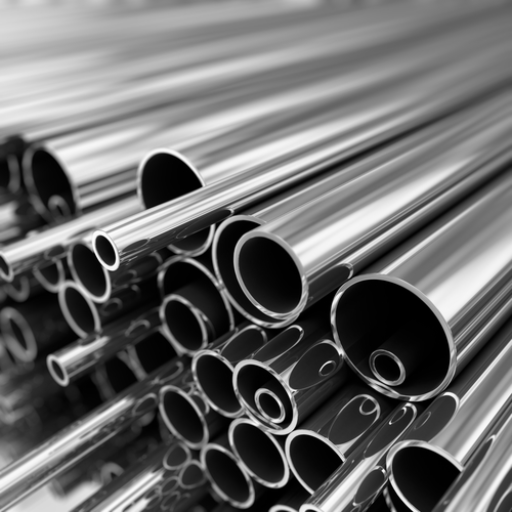
The primary distinction in corrosion resistance between 316 and 316L arises from their carbon content. 316L, with its lower carbon concentration (up to 0.03%), exhibits superior resistance to intergranular corrosion, particularly in environments where the material is exposed to high temperatures during welding or heat treatment. This is because the reduced carbon content minimizes the risk of carbide precipitation at grain boundaries, which can otherwise weaken the material and make it susceptible to corrosion. Conversely, 316 is more prone to this type of degradation, making it less suitable for critical applications requiring enhanced corrosion resistance.
Impact of Lower Carbon Content on Corrosion
The lower carbon content in materials such as 316L stainless steel is a critical factor in mitigating the risks of intergranular corrosion. When exposed to high temperatures during welding or heat treatment, materials with higher carbon content, like conventional 316 stainless steel, are more susceptible to carbide formation at grain boundaries. These carbides deplete the material of chromium—a key element for corrosion resistance—resulting in localized weakening and increased susceptibility to corrosive environments.
316L stainless steel, however, with its reduced carbon composition (max 0.03% compared to 0.08% in 316), minimizes the risk of chromium carbide precipitation. This ensures the integrity of the material’s passive oxide layer, maintaining its corrosion-resistant properties even after thermal processing. This distinction makes low-carbon grades such as 316L particularly favorable for use in chemical processing, marine environments, and medical applications where durability and resilience to corrosion are paramount.
Resistance to Pitting and Crevice Corrosion
Pitting and crevice corrosion are localized forms of corrosion that can significantly compromise the structural integrity of stainless steel in aggressive environments. Grades such as 316 and 316L stainless steel demonstrate superior resistance to these corrosion types due to their molybdenum content, which enhances the material’s ability to withstand chloride-ion attacks. This is critical in environments containing chlorides, such as marine or coastal applications, chemical processing plants, and desalination systems. Testing methods like the ASTM G48 test quantify this resistance by measuring the pitting resistance equivalent number (PREN), where higher values indicate improved performance. For optimal protection, proper design to reduce crevice formation and regular maintenance are also essential to mitigate risks in susceptible conditions.
Performance in Corrosive Environments
To perform effectively in corrosive environments, materials such as stainless steel or specialized alloys are meticulously selected based on their corrosion resistance properties. Factors such as the alloy’s chromium, molybdenum, and nitrogen content directly influence its pitting and crevice corrosion resistance. High-performance alloys, particularly those with a PREN value above 40, are often utilized for their ability to withstand aggressive media, including saltwater, acidic compounds, and oxidizing agents.
Protective coatings, such as epoxy or polymer layers, can further enhance their durability by creating an impermeable barrier against corrosive agents. Regular performance evaluations, like salt spray tests or electrochemical impedance spectroscopy (EIS), are conducted to assess material integrity over time. Additionally, designing equipment to minimize contact points for moisture and corrosive deposits reduces vulnerabilities, ensuring long-term performance in harsh operational settings. Proper maintenance, including periodic cleaning and inspection, is equally indispensable for mitigating localized corrosion issues such as pitting and crevice degradation.
Why is Weldability Important in Stainless Steels?
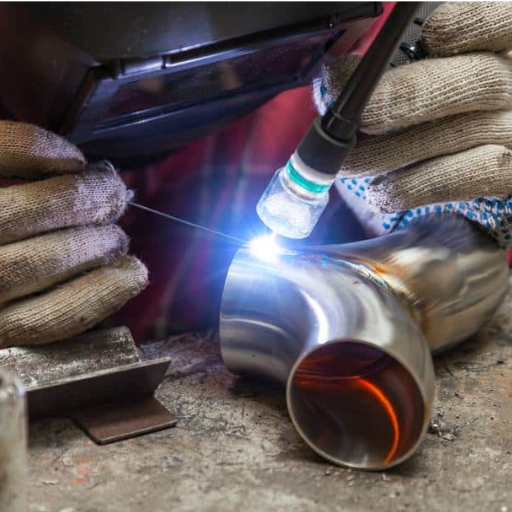
Weldability is a critical property of stainless steels as it directly impacts the performance and durability of welded structures. Stainless steels are widely used in applications requiring corrosion resistance, strength, and aesthetic appeal, and poor weldability can compromise these attributes. Proper weldability ensures uniform mechanical properties, prevents defects such as cracking or distortion, and maintains the material’s corrosion resistance in the welded zones. Additionally, good weldability allows for cost-efficient fabrication processes while achieving reliable and long-lasting joints, which is essential in industries such as construction, automotive, and chemical processing.
Avoiding Weld Decay in 316L
To avoid weld decay in 316L stainless steel, I focus on proper welding techniques and suitable post-weld treatments. First, I ensure the use of a low-carbon grade (316L) specifically designed to minimize carbide precipitation during welding. Second, I maintain appropriate heat inputs and interpass temperatures to prevent sensitization. Additionally, solutions like post-weld annealing can help restore corrosion resistance if necessary. Finally, I use filler materials compatible with 316L to maintain the integrity and durability of the welds. These practices collectively mitigate the risk of weld decay while ensuring optimal performance in corrosive environments.
Impact of Mechanical Properties on Welding
Mechanical properties significantly influence the quality and reliability of welding outcomes. Key properties such as tensile strength, toughness, hardness, and ductility dictate how materials respond to welding processes and their performance under service conditions. For instance, materials with high tensile strength require controlled heat inputs to prevent localized hardening or cracking, whereas high-ductility materials are more tolerant to residual stresses but may experience distortion.
Technical Parameters to Consider:
1. Heat Input:
-
- Recommended range to avoid excessive hardness or cracking: 1-3 kJ/mm.
- Preheat and Interpass Temperature:
- For carbon steels, typically 50-200°C depending on the carbon equivalent.
- For stainless steels like 316L, below 150°C to minimize sensitization risks.
- Weld Metal Hardness:
- Maintain below 350 HV for carbon steels to reduce brittleness.
- Post-Weld Heat Treatment (PWHT):
- Temperature range for stress relief: 550-650°C for low alloy steels.
- Duration depends on material thickness and welding configuration.
These parameters ensure optimal mechanical performance while preventing common weld failures such as cracking, warping, or degradation in service. Adhering to these guidelines enhances structural integrity and operational longevity of welded components.
Exploring the Grades of Stainless Steel: How Does 316 Compare?
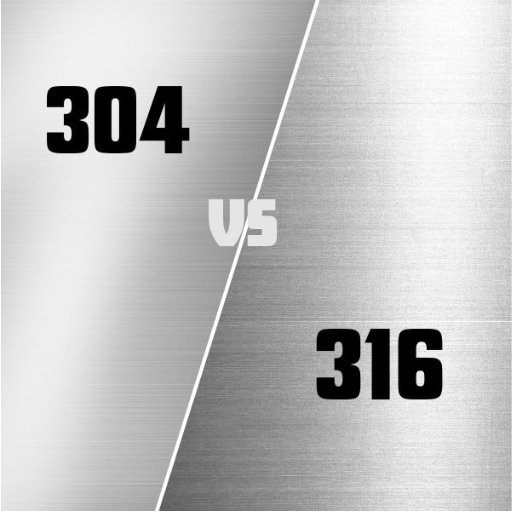
Grade 316 stainless steel is renowned for its superior corrosion resistance, particularly in environments containing chlorides or other harsh chemicals. This is attributed to its molybdenum content, which is absent in grade 304 stainless steel, making 316 more resistant to pitting and crevice corrosion. Additionally, 316 excels in high-temperature environments due to its enhanced mechanical strength and oxidation resistance, which are superior to those of lower-grade stainless steels. While 304 stainless steel is more cost-effective and suitable for general applications, 316 is the material of choice for industries such as marine, chemical processing, and medical devices, where durability and resistance to aggressive conditions are paramount.
316 vs Other Stainless Steel Grades
316 stainless steel can be compared to a variety of other grades, including 304, 430, 2205, and 410, each with distinct properties tailored for specific applications. Below is a concise comparison based on key parameters.
|
Parameter |
316 |
304 |
430 |
2205 |
410 |
|---|---|---|---|---|---|
|
Corrosion |
High |
Moderate |
Low |
Very High |
Moderate |
|
Strength |
High |
Moderate |
Low |
Very High |
High |
|
Temp Resist |
High |
Moderate |
Low |
High |
Moderate |
|
Cost |
Higher |
Moderate |
Low |
Higher |
Low |
|
Magnetic |
Non-magnetic |
Non-magnetic |
Magnetic |
Magnetic |
Magnetic |
|
Use Cases |
Marine, Chem |
General Use |
Deco, Appl |
Oil, Chem |
Tools, Cut |
Comparing 316 Steel with 304 Steel
316 steel offers superior corrosion resistance, particularly in chloride environments, while 304 steel is more cost-effective, suitable for general applications, and widely used due to its versatility.
|
Parameter |
316 Steel |
304 Steel |
|---|---|---|
|
Corrosion Res |
Superior |
Moderate |
|
Chloride Res |
High |
Low |
|
Temp Resist |
High |
High |
|
Cost |
Higher |
Lower |
|
Strength |
High |
Moderate |
|
Weldability |
Excellent |
Excellent |
|
Applications |
Marine, Chem |
General, Appl |
Choosing the Right Stainless Steel Alloy for Your Needs
When selecting the ideal stainless steel alloy, I consider the specific requirements of my application. If I need superior corrosion and chloride resistance, especially in marine or chemical environments, I opt for 316 stainless steel due to its enhanced durability and ability to withstand harsh conditions. However, for general-purpose applications where budget is a key factor, 304 stainless steel is my choice. Its versatility, cost-effectiveness, and compatibility with a wide range of uses make it a practical solution. By evaluating factors such as exposure to corrosive elements, temperature demands, and cost constraints, I make an informed decision between these two alloys.
Reference Sources
- Bergsen Metals: 316 vs 316L Stainless Steel
- Unified Alloys: 316 vs. 316L Stainless Steel – A Comprehensive Comparison
- Arc Machines: 316L vs 316 Stainless Steels – Details Make the Difference
- Nordic Steel: The Difference Between 304, 304L, 316, and 316L
Frequently Asked Questions (FAQs)
Q: What are the main differences between grade 316 and grade 316L stainless steels?
A: The primary difference between grade 316 and grade 316L stainless steels is the carbon content. Grade 316L stainless steel contains less carbon, which gives it better corrosion resistance compared to grade 316, especially in environments where stress-relief is a concern.
Q: Why is 316L considered to have better corrosion resistance than 316?
A: 316L has better intergranular corrosion resistance due to its low carbon content, which minimizes the risk of carbide precipitation during welding, thus improving its resistance to corrosion in welded structures.
Q: How does the mechanical strength of stainless steel vary between 316 and 316L?
A: While both 316 and 316L stainless steels are austenitic and offer excellent corrosion resistance, grade 316 generally has higher strength due to its higher carbon content. However, 316L is preferred in applications requiring maximum corrosion resistance and forming and welding.
Q: What are the applications of 316 and 316L stainless steels?
A: Both grades are used in marine environments, chemical processing, and medical devices due to their corrosion resistant properties. 316L is particularly favored in environments that require welding and forming because of its better resistance to corrosion post-welding.
Q: How does 316L stainless steel improve resistance to pitting?
A: 316L stainless steel improves resistance to pitting in chloride environments due to its lower carbon content which reduces the precipitation of carbides, thus maintaining its corrosion resistant properties.
Q: Are there any limitations to using 316L stainless steel?
A: While 316L stainless steel offers excellent corrosion resistance, its lower carbon content means it may have slightly lower mechanical strength than grade 316. It is essential to consider the specific requirements of the application when choosing between the two grades.
Q: What makes grade 316 stainless steel suitable for high-temperature applications?
A: It is having corrosion resistant due to having high strength which makes its structural integrity unaffected at high temperatures.
Q: How does the presence of molybdenum in 316 and 316L stainless steels affect their properties?
A: The addition of molybdenum to 316 and 316L increases their resistance to corrosion, particularly from chlorides, while also enhancing their strength and toughness under a wide range of conditions.
Q: What types of stainless steel are comparable to grades 316 and 316L in terms of corrosion resistance?
A: Other types of stainless steel that offer excellent corrosion resistance include 304 and 304L grades which unlike 316 and 316L do not offer corrosion resistance in chloride environments. These grades are often chosen for their balance of strength and resistance to aggressive media.

